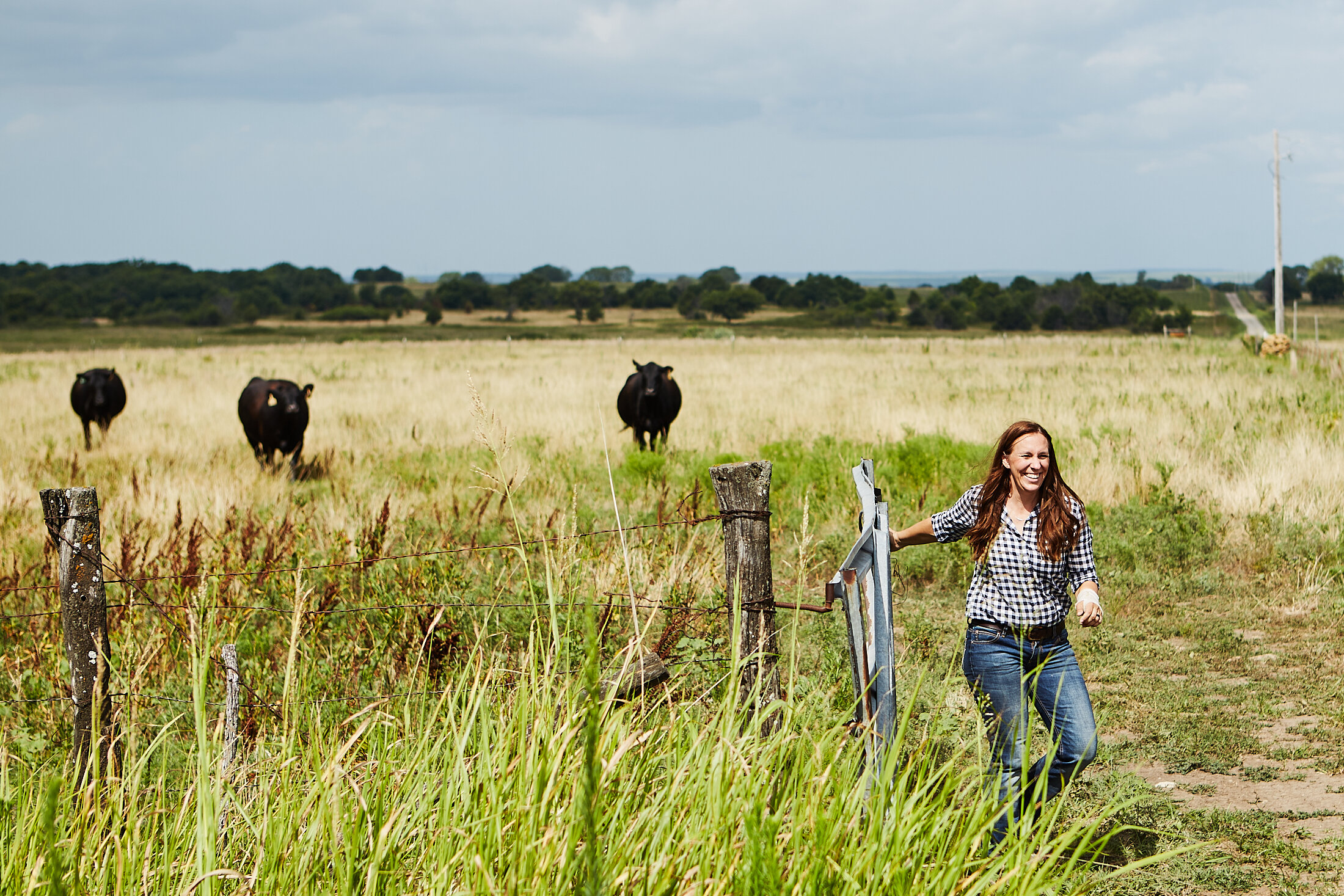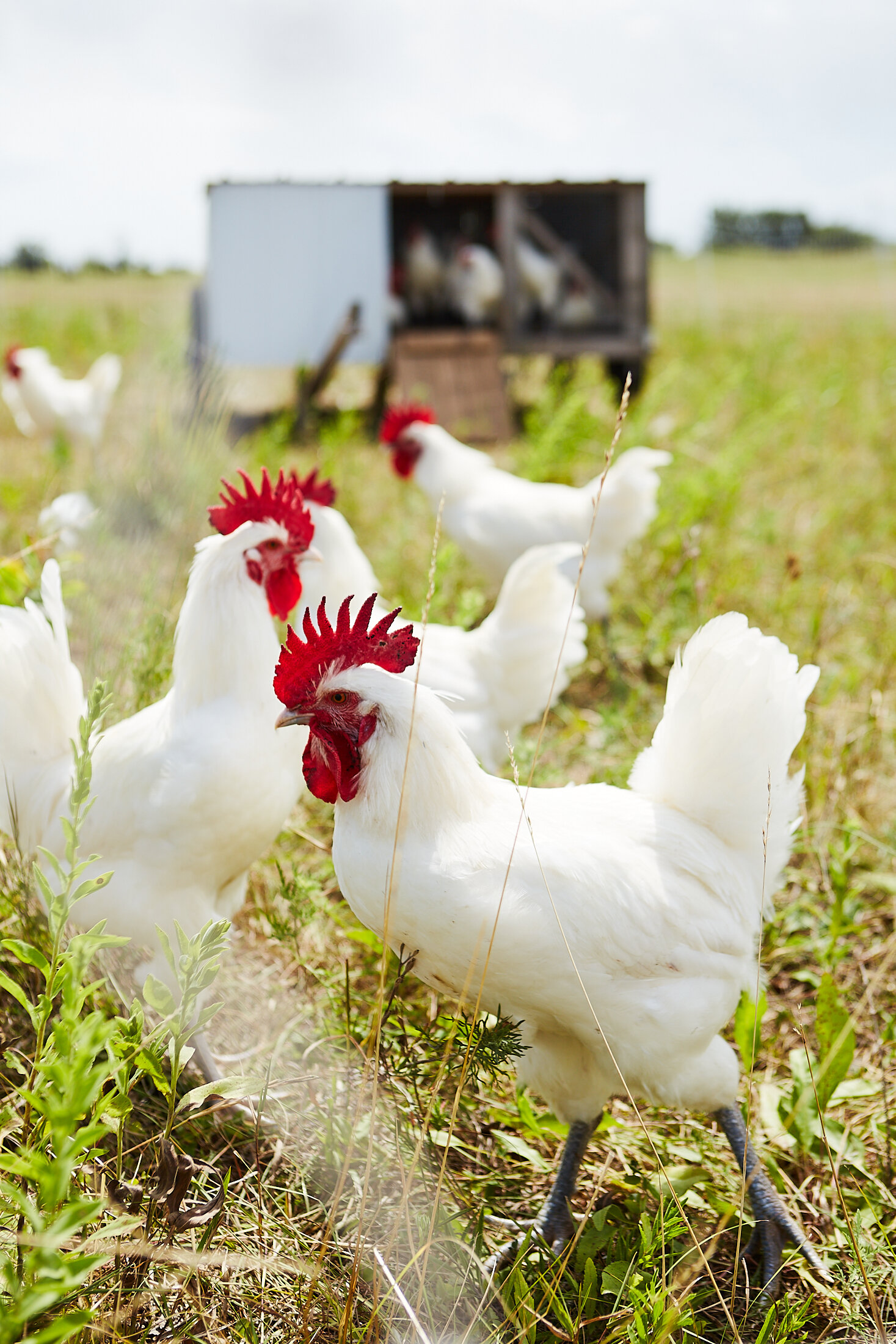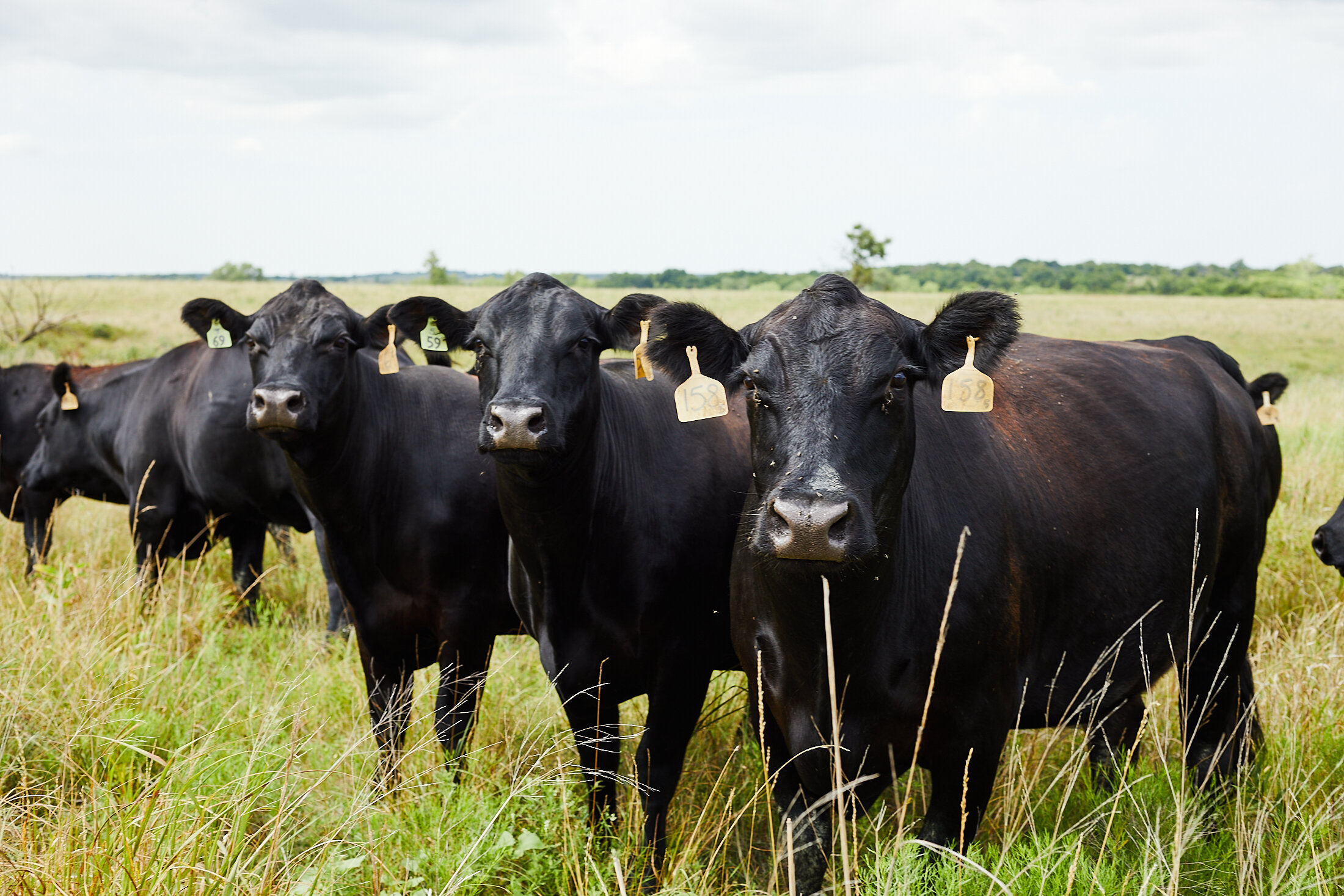On the farm: SALT CREEK FARM
A SERIES ABOUT OUR RELATIONSHIP WITH FARMERS, RANCHERS AND FOOD PRODUCERS.
Featured farm: Sara and Jay Shivers of Salt Creek Farm
Location: Severy, Kansas, in the Flint Hills
Ingredients: Ribeye, short ribs, brisket
Signs posted throughout the Flint Hills remind those who are passing through to “Eat Beef.” More than 500,000 yearlings from Kansas and across the country graze on the tender grasses from April to September.
As a caravan of cars from Kansas City pulls into the gravel driveway that leads up to an olive-green farmhouse, hot gusts of July winds ripple the sprawling tallgrass prairie dotted by cows and calves.
“These girls are looking fat and happy,” Sara Shivers remarks to Fox and Pearl Chef Vaughn Good and members of his staff and family who have made the 2 ½-hour drive.
As the herd of Black Angus cows and calves move from one pasture to another, a black lab named Padmé -- a Star Wars reference that matches with the action figures Chef Good tucks into the stacks on his restaurant cookbook shelves -- greets the visitors and herds them onto a trailer with hay bales covered in quilted comforters for a closeup look at how the cattle are raised at Salt Creek Farm.
Sara grew up half mile away from the farmhouse and is the third generation in her family to graze cattle on what is widely considered some of the best pastureland in the country. “My dad discouraged me from going into agriculture because it’s a hard life and it can be a lot of stress…He remembers living through the farm crisis of the ‘80s,” she says.
She majored in family studies at Kansas State University and then headed to North Texas State University for a graduate degree before working in non-profit management. While at North Texas State she met Texan Jay Shivers.
Soon after the couple was married, they began talking seriously about a life of farming in Kansas. When a job for City Planner opened in El Dorado, located about 30 miles from Severy, it seemed like a sign. Jay applied, was hired, and the couple headed to the Flint Hills with their two-week-old daughter Stella.
The economics of most small family farms these days dictate that someone in the family works what Sara refers to as a “town job.” Jay’s outside job also provides health insurance for the family, which has grown to include 2-year-old Margot.
When not at work, Jay focuses on the garden plot behind the farmhouse and tries to expand the farm operation by “thinking outside of the box.” He’s growing a test batch of red corn, raising a brood of red (comb) white (body) and blue (talons) French Bresse heirloom chickens prized for their deep, rich flavor, and tending an apiary surrounded by electrified fence to keep the cattle from knocking the bee’s hives over while ambling around the fields. Meanwhile, Sara is considering Katahdin lamb as an addition to graze the pastures.
Jay drives the truck through a series of metal gates sectioning the various pastures. Sara hops off the truck bed to open and close the gates. To lure the cows from the sparse shade they lounge under so their curious visitors can take a closer look, Jay stops the truck and Sara dumps a yellow bucket full of high protein “range cubes” onto the grass beside the trailer.
As if calling her dog to get a reward for performing a trick, Stella, now 5, who refers to the cubes as “cow treats,” gleefully passes them out to the youngest guests, Chef Vaughn and partner Kristine Hull’s daughters Ophelia and Tallulah. The girls throw cubes over the side of the trailer. They are fascinated by their vantage point of the herd but also vaguely wary of the 1,300-pound adult animals.
Grass-fed beef cattle are generally smaller than grain-fed cattle. Raising a herd on grass requires managing the pasture, including controlled prairie burns to remove scrub, invasive native species and allow tender new shoots of grass to grow. Put a cow on a burned patch or a wild patch of prairie, and they will favor foraging on the burned patch every time, Sara says.
Salt Creek Farm cattle do not receive antibiotics unless they are sick. During the winter, they are fed grasses grown on the farm. When they move from grass to grain in the final months, they are fed a mix of soybeans and corn also grown ground on the farm. “We want to do what’s best for the land and best for the animals,” Jay says.
Back at the farmhouse, Sara and Jay grill burgers and ribeye steaks as everyone gathers around a long farmhouse table that the couple has pushed from their dining room out on to the porch for lunch. Home-churned vanilla ice cream drizzled with honey from the farm’s busy bees finish the meal.
“Their beef represents a nice balance,” Chef Vaughn says later of his long-time relationship with Salt Creek Farm. “It tastes like grass, and it tastes good because it’s also grain finished. Some grass-fed beef is too lean. It doesn’t have enough marbling and much flavor, and 100% grass-fed offers quite a bit of divergence from what people are used to getting in the grocery store or other sources.”
But Chef Vaughn has made it his mission to look at ways to use the whole animal and all of its cuts instead of just the prime cuts favored by most restaurants. He already buys short ribs, brisket and rib-eyes from Salt Creek Farm, but his menu is flexible enough that he prefers to take what is available and work with it rather than placing a special order.
“If they’re out of something, or they have a lot of something, we try to help them out, take it off their hands and work it into the menu,” Chef Vaughn says of his approach with the more than 20 farmers he works with on a regular basis, including another cattle rancher. “I really work by the approach of send me your availability, pull a truck up and let’s see what you’ve got, and I’ll just make a menu out of that.
“I think better stuff comes out of that approach, at least for me. If I sit down and try to plan too far ahead, I overthink it, and get a bit too much in my head, where if I just do it off the fly it just feels more organic and I get a better result.”
Back at Fox and Pearl, Chef Vaughn salts Salt Creek Farm brisket and meaty short ribs before heading for the patio’s chest smoker. The tantalizing smell of beef slow smoking on hickory curls into the air and completes the circle just in time for dinner service.
Dish: Salt Creek Farm Short Rib, Old Crow demi-glace, steak butter #1, horseradish cream with house fries
“If . . . they have a lot of something, we try to help them out, take it off their hands and work it into the menu”















